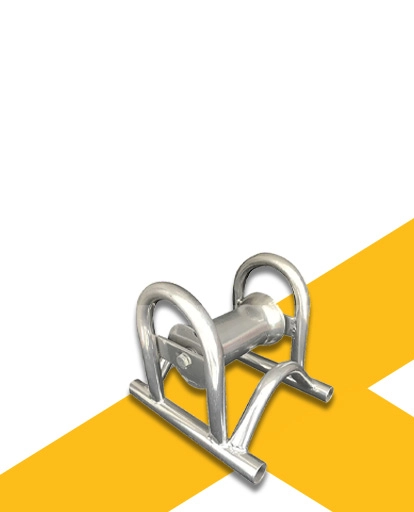
-
 Afrikaans
Afrikaans -
 Albanian
Albanian -
 Amharic
Amharic -
 Arabic
Arabic -
 Armenian
Armenian -
 Azerbaijani
Azerbaijani -
 Basque
Basque -
 Belarusian
Belarusian -
 Bengali
Bengali -
 Bosnian
Bosnian -
 Bulgarian
Bulgarian -
 Catalan
Catalan -
 Cebuano
Cebuano -
 Corsican
Corsican -
 Croatian
Croatian -
 Czech
Czech -
 Danish
Danish -
 Dutch
Dutch -
 English
English -
 Esperanto
Esperanto -
 Estonian
Estonian -
 Finnish
Finnish -
 French
French -
 Frisian
Frisian -
 Galician
Galician -
 Georgian
Georgian -
 German
German -
 Greek
Greek -
 Gujarati
Gujarati -
 Haitian Creole
Haitian Creole -
 hausa
hausa -
 hawaiian
hawaiian -
 Hebrew
Hebrew -
 Hindi
Hindi -
 Miao
Miao -
 Hungarian
Hungarian -
 Icelandic
Icelandic -
 igbo
igbo -
 Indonesian
Indonesian -
 irish
irish -
 Italian
Italian -
 Japanese
Japanese -
 Javanese
Javanese -
 Kannada
Kannada -
 kazakh
kazakh -
 Khmer
Khmer -
 Rwandese
Rwandese -
 Korean
Korean -
 Kurdish
Kurdish -
 Kyrgyz
Kyrgyz -
 Lao
Lao -
 Latin
Latin -
 Latvian
Latvian -
 Lithuanian
Lithuanian -
 Luxembourgish
Luxembourgish -
 Macedonian
Macedonian -
 Malgashi
Malgashi -
 Malay
Malay -
 Malayalam
Malayalam -
 Maltese
Maltese -
 Maori
Maori -
 Marathi
Marathi -
 Mongolian
Mongolian -
 Myanmar
Myanmar -
 Nepali
Nepali -
 Norwegian
Norwegian -
 Norwegian
Norwegian -
 Occitan
Occitan -
 Pashto
Pashto -
 Persian
Persian -
 Polish
Polish -
 Portuguese
Portuguese -
 Punjabi
Punjabi -
 Romanian
Romanian -
 Russian
Russian -
 Samoan
Samoan -
 Scottish Gaelic
Scottish Gaelic -
 Serbian
Serbian -
 Sesotho
Sesotho -
 Shona
Shona -
 Sindhi
Sindhi -
 Sinhala
Sinhala -
 Slovak
Slovak -
 Slovenian
Slovenian -
 Somali
Somali -
 Spanish
Spanish -
 Sundanese
Sundanese -
 Swahili
Swahili -
 Swedish
Swedish -
 Tagalog
Tagalog -
 Tajik
Tajik -
 Tamil
Tamil -
 Tatar
Tatar -
 Telugu
Telugu -
 Thai
Thai -
 Turkish
Turkish -
 Turkmen
Turkmen -
 Ukrainian
Ukrainian -
 Urdu
Urdu -
 Uighur
Uighur -
 Uzbek
Uzbek -
 Vietnamese
Vietnamese -
 Welsh
Welsh -
 Bantu
Bantu -
 Yiddish
Yiddish -
 Yoruba
Yoruba -
 Zulu
Zulu


Sep . 07, 2024 14:16 Back to list
Efficient Wire Pulling with Fish Tape | Quick Techniques and Tips
Pulling Wire with Fish Tape A Quick and Efficient Method
When it comes to electrical installations, particularly in residential and commercial settings, pulling wires through conduit or walls can often be a challenging task. Among the various methods available, using fish tape stands out as one of the most effective and efficient ways to achieve this goal. In this article, we will explore the advantages of using fish tape for pulling wire, as well as the best practices to ensure a seamless process.
Fish tape, often made from steel, fiberglass, or nylon, is a long, flexible tool designed to navigate tight spaces and corners. Its primary purpose is to guide wires or cables through conduits and walls, significantly reducing the effort and time required for installations. One of the main benefits of using fish tape is its ability to handle long distances and sharp bends that are common in electrical systems. This flexibility makes it an essential tool for electricians and DIY enthusiasts alike.
To begin the process of pulling wire with fish tape, first, ensure you have the appropriate length and type of fish tape for your project. For instance, fiberglass fish tape is ideal for long runs in dry environments, while steel fish tape offers durability in tougher situations. Once you have your materials, the first step involves feeding the fish tape into the conduit. Begin at the entry point of the conduit and push the tape through, carefully avoiding any bends that may impede its progress.
pulling wire with fish tape a quick and efficient method for ...

Once the fish tape has been fully inserted, it’s time to attach your wire or cable. Securely tie the wire to the end of the fish tape using electrical tape or a suitable knot. This connection must be robust to ensure that the wire does not detach as you pull it back through the conduit. Then, gently pull the fish tape back through the conduit, taking care to maintain even pressure. It’s crucial not to yank or pull too forcefully, as this could damage the wire or the conduit itself.
As you pull the tape, it’s also advisable to have a partner assist you by guiding the wire or providing resistance to ensure a smooth pull. This teamwork can help in preventing any snags or kinks that may arise during the process. Once the wire is successfully pulled through, disconnect it from the fish tape and make the necessary electrical connections.
In conclusion, pulling wire with fish tape is a quick and efficient method that simplifies electrical installations. With the right materials and techniques, electricians can navigate challenging spaces with ease, ultimately saving time and effort. Whether you are a seasoned professional or a beginner tackling a household project, mastering the use of fish tape can significantly enhance your wiring experience.
Latest news
What Are Construction Tools and How Are They Used?
NewsJul.11,2025
Professional-Grade Duct Rodding Tools for Superior Cable Installation
NewsJul.11,2025
Enhancing Safety and Efficiency with Modern Hot Stick Solutions
NewsJul.11,2025
Empowering Cable Installation with Advanced Rodder Solutions
NewsJul.11,2025
Elevate Your Cable Installation Projects with Cable Pulling Tools
NewsJul.11,2025
Efficient Cable Handling Solutions: Cable Rollers for Sale
NewsJul.11,2025











